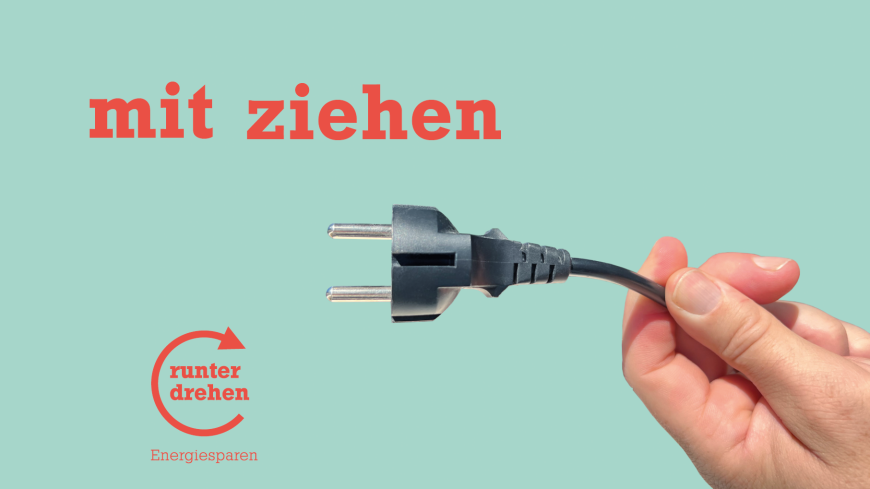Getting involved
How we live more sustainably by establishing new patterns of behaviour.
2022/12/16
We are making headway. In October, we were able to save 4% on electricity and 21% on heating. In November, we saved 11% on electricity and 29% on heating. This is a great success! Thank you for having done your part to make this possible. However, we still have some cold months ahead of us and want to keep up the spirit to reach our ambitious goals. In this article, we will share with you how best to implement and practice all these energy-saving tips.

Currently, everybody is talking about energy-saving tips: “Have you turned on your heating yet?” pops up regularly in this year’s small talk about the weather. During lunch at the dining hall (Mensa), we discuss which energy-saving measures have already been taken and how high the energy consumption of this or that device or piece of equipment is and what this means by comparison. How to save energy is becoming a hotly debated topic. There are many websites on the Internet sharing videos, checklists and guides. TU Darmstadt has a dedicated webpage, too, where we compiled a list of tips and additional information.
Turning knowledge into action
As inspiring as those energy-saving tips may be, their implementation is equally important. To peruse a handful of tips is one thing, to integrate them in our daily routines is something else entirely.
Environmental psychology offers useful ways to go about it. Environmental psychology is a branch of psychology dealing with the role that emotions, routines or habits, and social influencing factors play regarding our behaviour concerning the environment (in which we live), such as our energy-saving behaviour.
This month, we will focus on saving electrical energy. We will look at some of the ways that may help people to put their theoretical knowledge into practice from an environmental psychology perspective.
Wandelwerk e.V.
Every one of us has the possibility to be part of the solution.

6 Keys to sustainable behaviour
The Wandelwerk association gathers insights from environmental psychology to help people act in a climate-friendly way. We have summarised the best tips from their manual and workshop here:
Prompts
To not lose sight of our goal, little notes can help us to remember the behaviour, we want to practice. A little note stuck to the door saying “lights and socket strip turned off?” reminds us of what we want to do whenever we leave a room.
All described psychological factors are part of the Psychologische Modell zur Erklärung nachhaltigen Handelns (psychological model to explain sustainable action). This is a method developed by K. Hamann, A. Baumann and D. Löschinger described in their book Psychologie im Umweltschutz – Handbuch zur Förderung nachhaltigen Handelns (Psychology of environmental protection.
Handbook for encouraging sustainable actions.). This handbook is available as download by donation (opens in new tab) on the webpage of the Wandelwerk e.V. (opens in new tab) association.
Here you can find more information about the campaign “Save energy”.
















